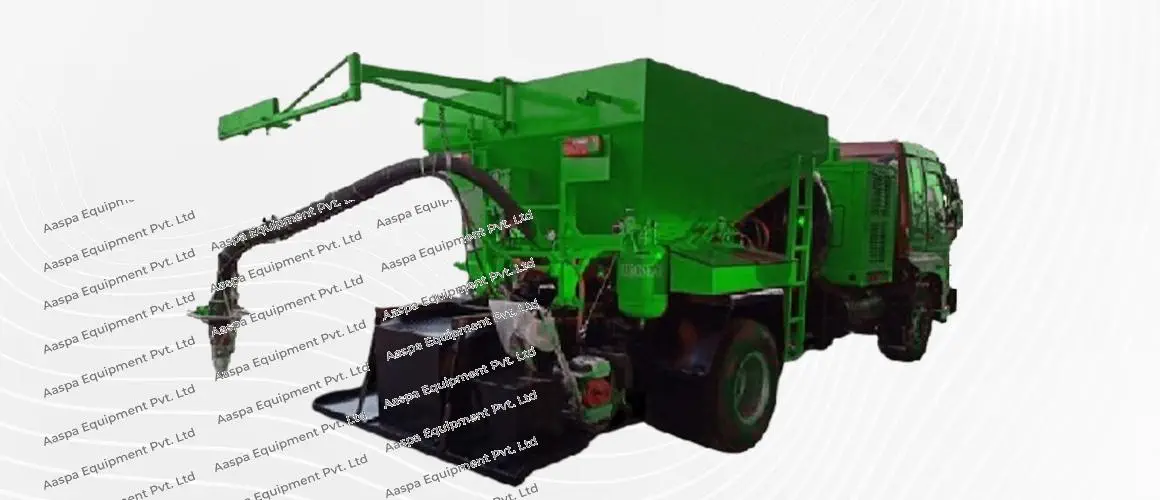How Do Modern Pothole Patchers Improve Road Lifespan in Heavy-Rainfall Areas?

Modern pothole patchers address these issues through advanced materials, automated application techniques, and precision sealing methods that enhance repair durability. This article examines the primary challenges of pothole patching in wet climates and explores how innovations such as hot mix technology, spray injection patching, polymer-modified asphalt, and automated systems contribute to longer-lasting road surfaces.
Challenges of Pothole Repairs in Heavy-Rainfall Areas
Industrial logistics parks are designed for high-capacity vehicle movement, requiring clear navigation paths and designated zones to prevent delays and accidents. Road markings serve as visual guides that streamline traffic, establish safety protocols, and help optimize the flow of goods and personnel.
1. Constant Water Intrusion
Roads in high-rainfall regions suffer from persistent moisture exposure, which weakens the bond between asphalt and aggregate. When potholes form, water seeps into cracks, eroding the base layer and accelerating road deterioration.
2. Frequent Road Damage
Heavy rainfall washes away loose materials, widens cracks, and causes patches to fail sooner than expected. Inadequate drainage further compounds the issue, requiring frequent maintenance and increasing costs.
3. Traditional Patching Limitations
Conventional repair methods, such as cold patching, often fail under wet conditions. Poor adhesion and water penetration shorten the effectiveness of repairs, leading to repeated patching efforts.
How Modern Pothole Patchers Improve Road Durability?
Modern pothole patchers are engineered to tackle these challenges with advanced technology and materials designed for longevity. Here’s how they make a difference:
1. Advanced Hot Mix Technology
Modern patching equipment uses hot mix asphalt (HMA), which provides superior adhesion compared to traditional cold patch materials. Heated asphalt bonds more effectively with existing pavement, creating a water-resistant seal that prevents further deterioration.
2. Spray Injection Patching for Better Sealing
Spray injection patching is a key innovation in pothole repair. This method:
- Cleans the pothole with high-pressure air to remove debris and moisture.
- Applies a tack coat of binding material to improve adhesion.
- Fills the pothole with a controlled mixture of aggregate and binder, ensuring a durable, weather-resistant repair.
Since this technique minimizes direct water exposure during the patching process, it’s highly effective in wet climates.
3. Automated Systems for Acuracy and Efficiency
Modern patching machines incorporate automation, reducing human error and improving repair quality. Features such as:
4. Polymer-Modified Asphalt for Enhanced Durability
Newer pothole patchers utilize polymer-modified asphalt, which has improved elasticity and water resistance. This material:
- Expands and contracts with temperature fluctuations, reducing crack formation.
- Forms a stronger bond with the existing pavement, preventing water infiltration.
- Withstands repeated rain exposure without breaking down.
5. Eco-Friendly and Weather-Resistant Cold Mix Solutions
While hot mix is preferred, modern cold mix solutions have also evolved. Specially formulated cold patch materials now include water-repellent additives, ensuring repairs hold up even in consistently wet environments. These eco-friendly mixes offer a temporary yet reliable fix until permanent repairs can be scheduled.
Long-Term Benefits of Modern Pothole Patching Technologies
1. Extended Road Lifespan
With the help of preventing water infiltration and strengthening patch adhesion, modern pothole patchers extend the lifespan of roads, reducing the frequency of repairs.
2. Cost Savings in Maintenance
Fewer repeat repairs translate to lower maintenance costs over time. Municipalities and road agencies can allocate budgets more effectively rather than continuously fixing the same problem areas.
3. Improved Safety and Ride Quality
Reliable pothole repairs contribute to smoother roads, reducing vehicle damage and enhancing driver safety—especially in areas prone to heavy rainfall and flooding.
4. Faster and More Efficient Repairs
Automated and spray injection methods allow road crews to complete repairs quickly, minimizing disruptions to traffic and ensuring roads remain functional even in challenging weather conditions.
Summing it up
Maintaining roads in heavy-rainfall areas requires more than temporary fixes. Modern pothole patchers offer stronger materials and advanced application techniques that improve road durability and reduce maintenance efforts. Investing in the right technology helps prevent repeated damage, keeping roads safer and smoother.
For reliable patching solutions designed for tough weather conditions, contact info@aaspaequipment.com.
